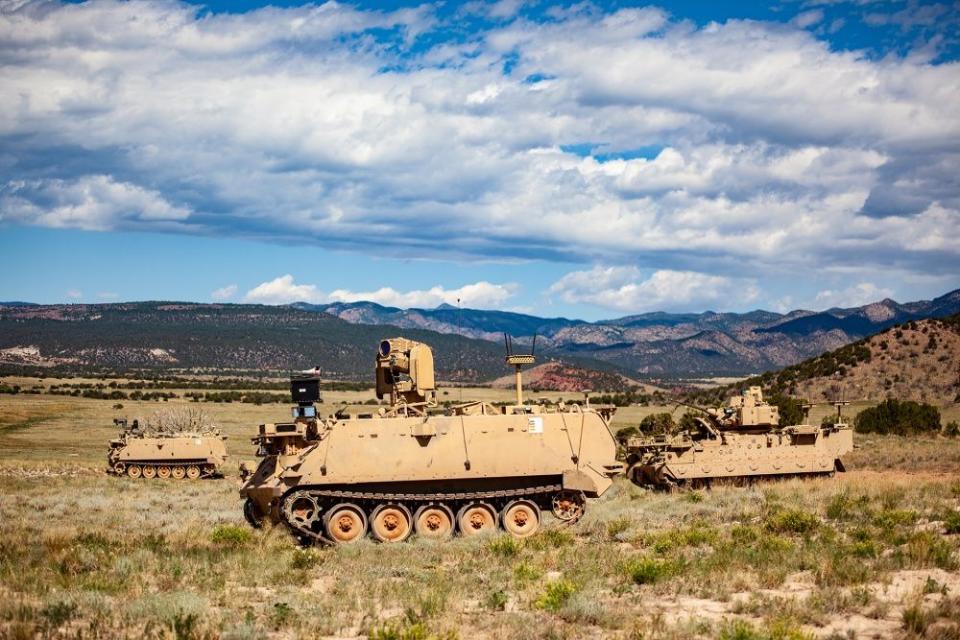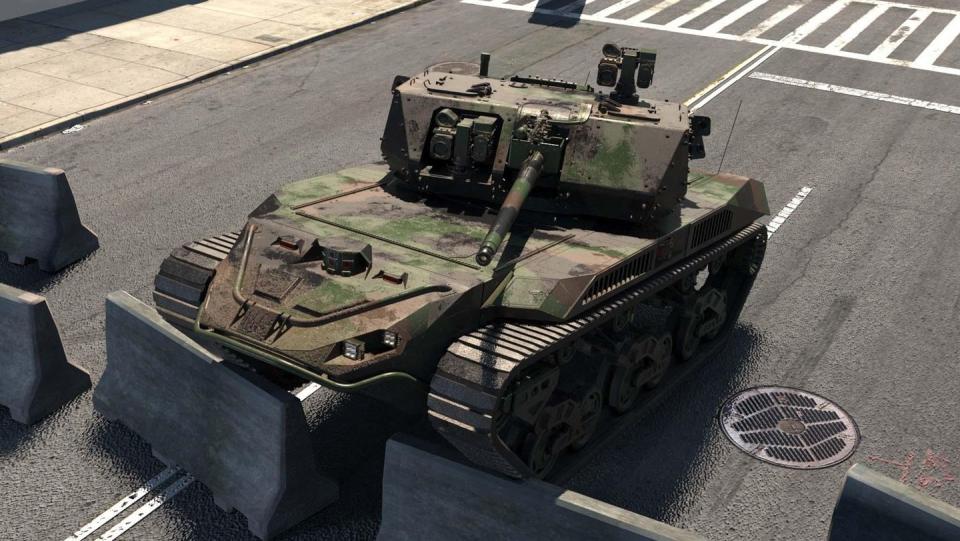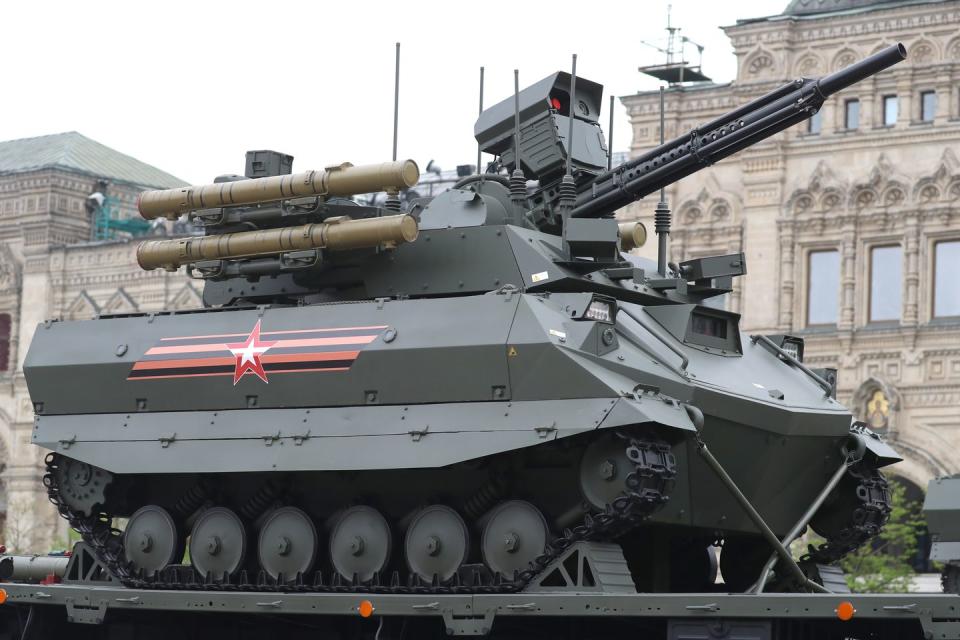The Army's Robotic Combat Vehicles Will Invoke WWII's 'Ghost Army'
“Hearst Magazines and Verizon Media may earn commission or revenue on some items through the links below.”
By the 2030s, the U.S. Army plans to build and deploy three types of robotic combat vehicles.
Piloted by soldiers from miles away, the robo-vehicles will either fight solo or alongside crewed vehicles.
The director of the Army's next-generation combat vehicle program likened the robotic vehicles to Gen. George Patton's "Ghost Army" of World War II.
The U.S. Army's future robotic combat vehicles will be like the Ghost Army of World War II, according to the director of the nascent program. The service hopes armed robots will be a reality by the 2030s, providing extra firepower and the tools to take on difficult, dangerous missions that would otherwise put human lives at risk.
Three types of uncrewed ground combat vehicles are on the horizon, meant to augment traditional combat units. These vehicles will be tasked with scouting the battlefield; skirmishing against humans or other robotic scouts; and fighting full-scale battles against heavily armored enemies.

Robotic Combat Vehicle-Light (RCV-L) will operate among infantry and engineers, carrying supplies and heavy weapons. RCV-M (Robotic Combat Vehicle-Medium) and RCV-H (Robotic Combat Vehicle-Heavy) will be larger, heavier vehicles operating alongside main battle tanks and infantry fighting vehicles.
"When you're in the darkness and you hear these vehicles moving and you don't really know where they are, there's a level of fear that rises up," Maj. Gen. Ross Coffman, director of the Next-Generation Combat Vehicle Cross Functional Team for the U.S. Army Futures Command, told Forbes.
"When you couple that with these multi-ton, payload-agnostic war machines that are silent and magically appear, these systems are the equivalent of the Ghosts of Patton's Army." The 23rd Headquarters Special Troops, known as Patton's "Ghost Army," used radio, visual, and sonic tools to deceive German forces during the final year of World War II.

In April 2021, the Army tested an RCV-L demonstrator (pictured at the top of this story) at Michigan's Camp Grayling military training facility in April 2021. It's equipped with a Common Remotely Operated Weapons Station-Javelin (CROWS-J) and a remote-controlled anti-tank missile launcher that can target and destroy a tank from 1.5 miles away. It's also equipped with a quadcopter for aerial reconnaissance missions.
Another demonstrator vehicle is the Ripsaw M5, once a star of reality television, but now owned by defense contractor Textron. Textron added an XM813 Bushmaster 30-millimeter chain gun—mounted in an unmanned turret—to the Ripsaw, and is supplying examples for RCV-M trials. Ripsaw would probably be best paired with the Army's Stryker brigade combat teams and their wheeled armored vehicles.
RCV-H, the largest and most powerful of the three robotic platforms, will likely be armored against machine gun fire and artillery shrapnel. It could mount a chain gun and heavier anti-tank missiles, such as the upcoming Joint Air-to-Ground Missile (JAGM). RCV-H could be paired with any Army ground forces, but would most often fight alongside M1 Abrams main battle tanks and M2 Bradley infantry fighting vehicles. The Army is currently simulating RCV-H by using obsolete M113 armored personnel carriers modified to run uncrewed.
The U.S. Army isn't the only ground combat force to operate uncrewed ground vehicles. Russia's Ground Forces operate the Uran-9, a robotic combat vehicle that mounts a 30-millimeter gun and four Ataka anti-tank missiles. Uran-9 was reportedly tested in combat in Syria 2018, and though the results were less than spectacular (some would say horrible), Russia is forging ahead and creating its first Uran-9 combat unit. Meanwhile, the People's Liberation Army Ground Forces, also known as the Chinese Army, is testing a number of uncrewed ground vehicles, including the Norinco "Sharp Claw" and the "Dragon Horse."

Research into uncrewed ground vehicles will eventually succeed and robots will take their place alongside human ground forces. Despite the hurdles, there's a strong incentive for armies to get this right: robotic vehicles are more cost-effective than crewed vehicles, and are quicker to build.
The army that gets it right first will get the most bang for its buck, while reducing its own casualties on the battlefield. That army could be the U.S. Army—Gen. Patton would surely approve.
🎥 Now Watch This:
You Might Also Like

